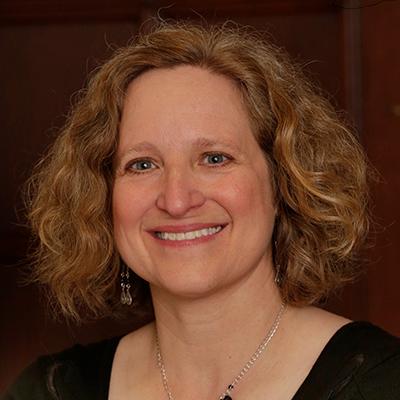The town of Dayton, Tennessee, was “a quiver with excitement,” The New York Times reported. It was 1925, and science teacher John Scopes was going on trial for violating a state law prohibiting the teaching of evolution. Scopes, the Times article noted, was a “mere figure, over which will joust the forces of evolution and religion, of Fundamentalism and Modernism, of liberalism and conservatism.”
The history of the “Scopes Monkey Trial” remains eerily relevant for education reporters. At the time of the Scopes trial, nearly two dozen states had anti-evolution bans, all of which were later overturned. The goal of the 20th century bans resembled the aim of “divisive concepts” prohibitions of today.
“There is a very, very long history of laws and other initiatives to try to limit teacher speech,” said Meira Levinson, an education professor at Harvard’s Graduate School of Education. “If you think back to the famous court case, the Scopes trial, that is not exactly a divisive concepts trial, but it is about ‘What does an educator have the right to teach?’”
In all, 18 states have approved restrictions on teaching about racism, sexism and critical race theory since 2021, according to an Education Week analysis. Writing about these measures can be tricky as I discovered while reporting a magazine piece on New Hampshire’s version of the restrictions for The Hechinger Report and The Boston Globe Magazine.
The measures are often written in a bit of doublespeak. One New Hampshire teachers union leader dubbed her state’s measure “Orwellian.” Tucked into a budget bill, New Hampshire’s measure was named Right to Freedom from Discrimination in Public Workplaces and Education. Yet under analysis, the measure appeared to be mostly about banning teaching that made white students feel uncomfortable.
So how does an education reporter do due diligence when covering divisive concepts laws?
1. Ground Yourself in Education History.
Restrictions on teaching are not novel, though what gets addressed changes. Sex education has been regulated through state legislation for decades. Keep in mind, too, that K-12 teachers are not guaranteed academic freedom. “The district can compel them to teach and talk about certain issues or not teach and talk about certain issues,” Levinson said.
Some state interference can be good, depending on what it is, she said. Civics education, after all, is a mandate in many states.
2. Ask Sources on All Sides to Define Terms They Use.
Think, for example, of a popular bogeyman for conservative activists these days, critical race theory, or CRT. Many states’ bans go directly after CRT. Levinson noted how some education reporters’ way of referring to CRT has changed over time. Early on, she said, most reporters picked up talking points from the left by basically accepting the notion that CRT was not taught in any K-12 schools. Journalists rightly described CRT as a complicated graduate-level theory developed at law schools. The issue, Levinson said, was whether teachers were teaching about some of the concepts that grew out of CRT, and some were. Yet she did not see that mentioned in a lot of early coverage.
“Now, the good education reporters have found a ground where they no longer deny that some of the things that are actually CRT are being taught in at least some schools while being able to distinguish CRT from, say, teaching about the fact of enslavement,” she said. Those reporters recognize that CRT is about having systems of racial inequality, and some teachers cover the concept.
Curby Alexander, an associate professor of professional practice in the College of Education at Texas Christian University in Fort Worth, said in Texas, an issue has been that the state’s characterization of what CRT is really does not match the more scholarly definition. The subtext is that teachers could not assign or discuss topics that promote “that America was built on racist ideology.”
“What they’re really saying is, ‘Don’t say anything that might make a white person feel ashamed because they’ve had privileges throughout society,’ ” Alexander said.
Education writers need to ask sources, whether they are teachers or the designers of the laws themselves, what they consider CRT to actually be.
3. Explore the Nuance in the Debate.
Coverage often depicts a good v. evil scenario. “People have reasons why they don’t want schools to teach about gender identity and gay marriage. They have honestly held convictions,” said Levinson, who was not showing support for those views. She was encouraging journalists to try to understand the reason for some of the stances. “It’s not just that there’s one side that’s hateful and another side that’s inclusive.”
She recalled how a principal told her about the challenges she faces carrying out a curriculum that emphasizes diversity and includes lessons on LGBTQ+ issues. “How does she deal with a family whose religious, cultural beliefs violate our way of life?” Levinson asked, referring to families whose religious beliefs may consider homosexuality a sin. Thus, the parents would object to instruction on such issues.
Levinson has helped create case studies, available to teachers around the world, to help educators figure out how they can still teach controversial topics and protect the rights of their students with a variety of identities, including LGBTQ+ students. In one case study, teachers discuss a real-life scenario in which a student asks a health educator a sexual health question, but the student’s parents have opted the youth out of the sexual education class. The bans on teaching about particular topics, she added, lead to increased marginalization of students. Reporters can help improve coverage by showing who’s really opposing the teaching of particular topics and why, she said.
Nudge editors to give the time necessary to find that nuance, whether it’s in the debate, in the classroom, or in response to the laws. It took me at least a month to find a teacher willing to let me observe her class to see how New Hampshire’s divisive concepts measure affected instruction on the Holocaust. She was struggling to teach about the Holocaust in the face of her state’s divisive concepts measure.
Seeing how this played out in a classroom was not simple. The effect of divisive concepts laws is rarely about what teachers are teaching. It is more about what teachers are not saying or teaching. During a teacher-led discussion, a student talked about how Hitler’s propaganda led many Germans to begin bullying Jews. The teacher then asked the student and her class, “Are there parallels to this in the world today?” The students did not offer an answer, and the teacher said nothing, either.
I noticed the silence and asked the teacher about it after class. This, she said, was the effect of the divisive concepts measure on her. She knew of many examples she could give but said nothing. Why? As I wrote in my story: “Rather than risk a parental complaint, she puts the burden on students to bring up concepts, such as systemic racism.” To show the nuance, I had to ask the teacher about her purposeful omissions. I had to watch for the silences.
4. Avoid Just Focusing on Extreme Examples of Teacher Firings.
Some education coverage makes it seem as if teachers struggle daily because of divisive concepts laws. The reality is often less dramatic, TCU’s Alexander said.
“In a lot of those cases, those folks are teaching history accurately, and they’re not leaving stuff out because it’s uncomfortable,” said Alexander, whose job requires him to observe teachers in action in Texas public schools. “But they’re doing it in a way that is not necessarily blaming or pointing fingers.”
He also has twin sophomores in Fort Worth public schools. “My kids have never come home and said, ‘I feel guilty for being white because my teacher said all white people are racists,’” he said.
Teachers are talking about racism, even as they are careful not to tell students what to think. “You can say there are privileges in society that some races have enjoyed more than others, whether walking into job interviews, walking in for a home loan,” he said.
Find ways to inform the public about the laws’ day-to-day effect on teachers, he urged.
For example, do what I did for my New Hampshire article and interview a wide sampling of teachers. Ask them how the divisive concepts measure in their state affects them each day. Also, observe teachers directly in their classrooms.
5. Investigate What the Public Really Thinks.
In New Hampshire, the divisive concepts measure led to lawsuits by teacher unions. Working with another journalist, I analyzed several hundred letters sent to state legislators. The majority were from New Hampshire residents who opposed the divisive concepts measure. Those letters plus public testimony at a legislative hearing revealed the public’s leanings.
“Help people understand what is truly widespread vs. what is a small number of people who manage to make a huge amount of noise,’” Levinson said.
6. Examine the Effect on Teacher Preparation Programs.
John Sturtz, an education professor at New Hampshire’s Keene State College, said his goal is to help his students protect themselves when they become teachers. He is frank, letting them know that very little has happened to New Hampshire teachers as a result of the new measure, yet the divisive concepts measure has created a culture of fear.
“I tell them, ‘You’re always entitled to your opinions, but when you come into the classroom, your primary objective is not to teach students what to think but how to think,’” Sturtz said.
Alexander’s approach at TCU is similar. He advises his students to cover historical facts and use primary source documents as a part of lessons. He wants them to be able to support what they’re teaching in case anyone questions it.
“I personally think a history teacher has a responsibility to address the history of slavery and discrimination in the country. But I’ve never taken the approach, ‘You’ve got to get out there; it’s your job to be a disruptor, to raise hell,’” he said, later adding, “I won’t take that position for future teachers. I want them in the profession.”
His TCU education school colleague, Cathryn van Kessel, has a different philosophy. She teaches a course to future teachers about forms of societal oppression, including issues related to race and gender. She advises them to acknowledge the identities of the youths they will teach.
“The conversation I want to encourage is these laws are temporary, and we have to treat them as temporary,” van Kessel said. “This is the time to be a little more subversive.”
Journalists can help by doing stories on the laws’ resistors, she added. “We know when we only talk about the problem and don’t talk about resistors, teachers feel they’re alone,” she said.
Linda K. Wertheimer, a veteran education journalist based in the Boston area, is the author of Faith Ed, Teaching about Religion in an Age of Intolerance. She has been an EWA Reporting Fellow, an EWA New to the Beat mentor, and a Spencer Fellow in Education Journalism. A former Boston Globe education editor, she previously covered education full-time at The Dallas Morning News, The Orlando Sentinel and other publications.


